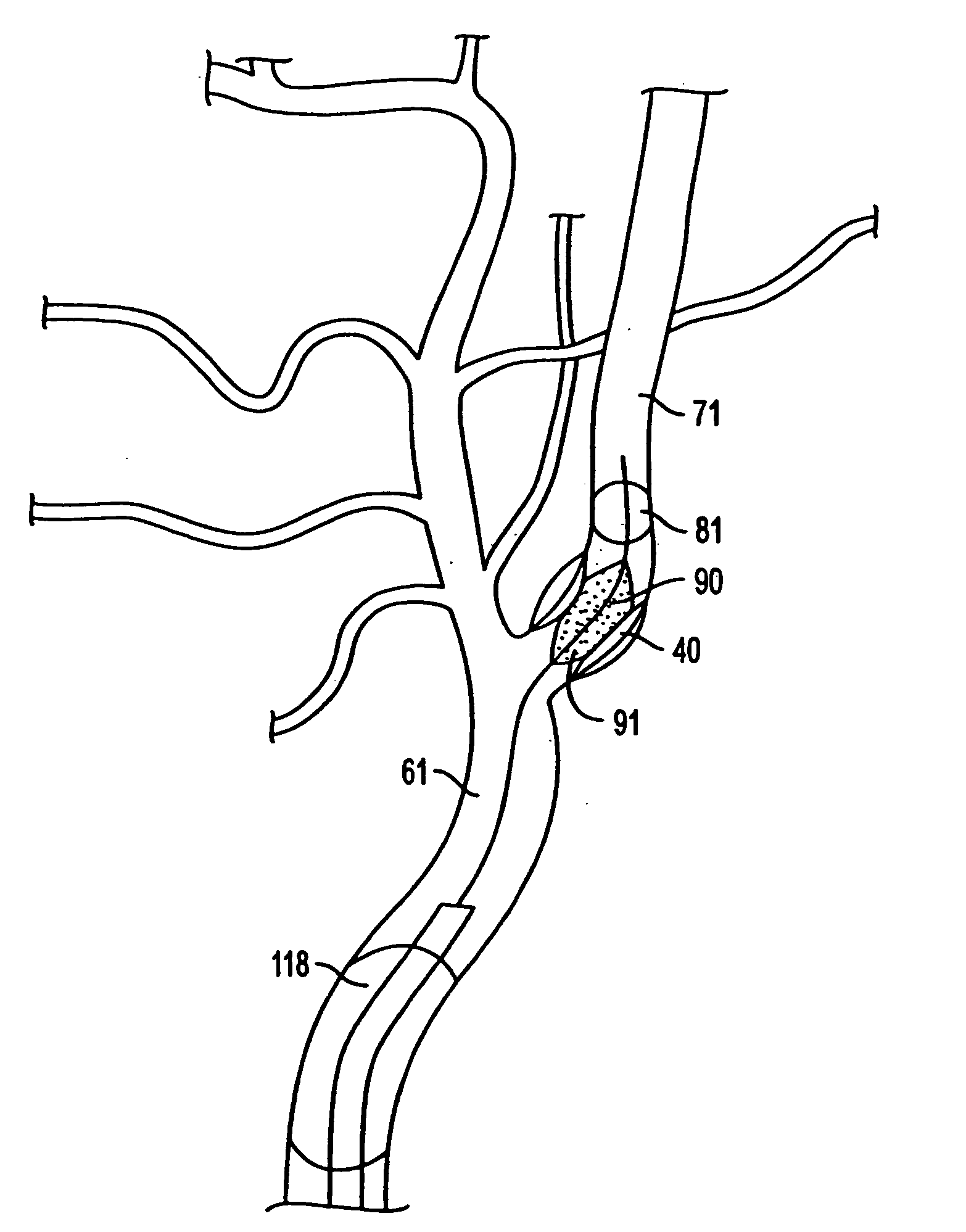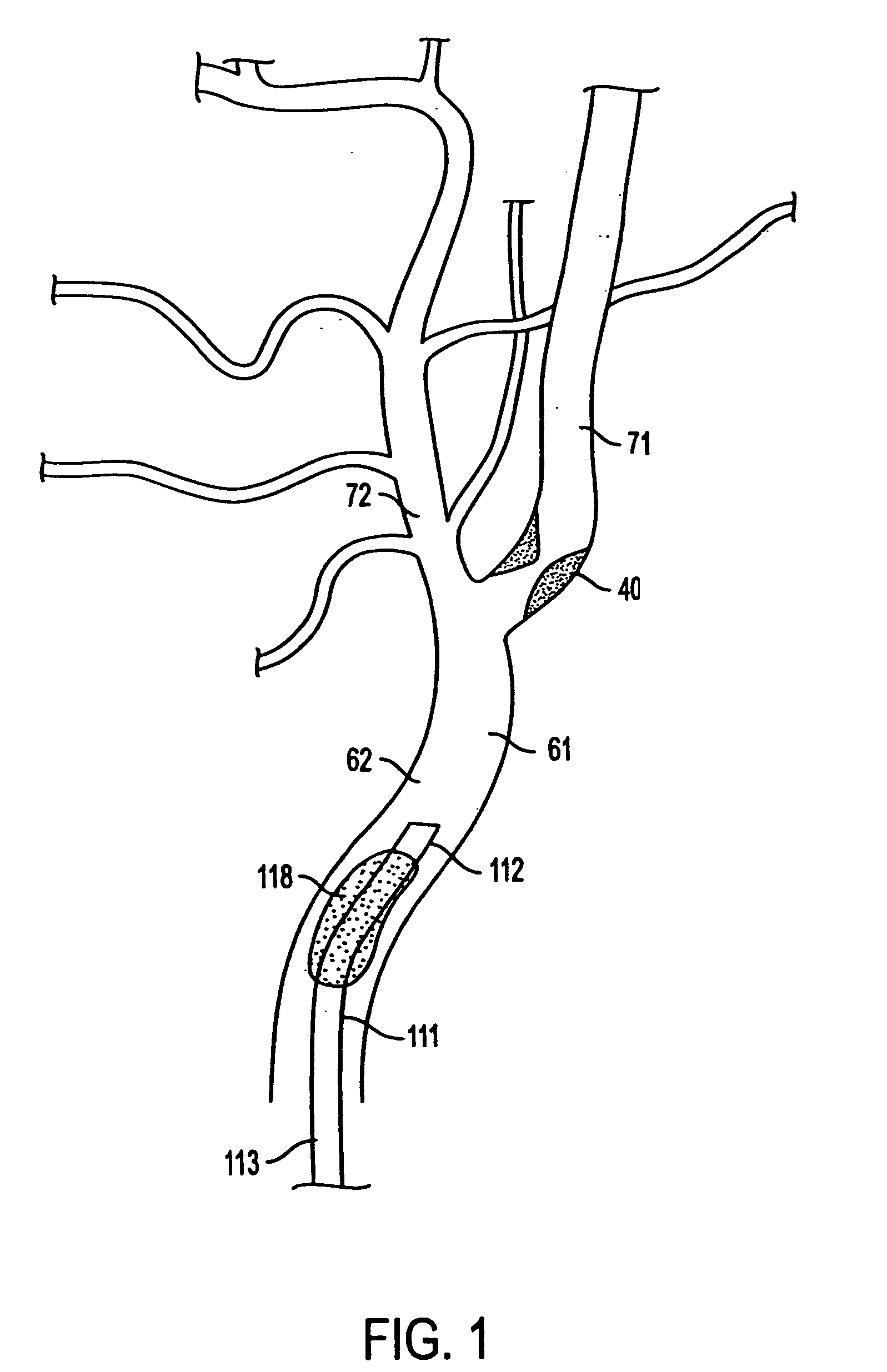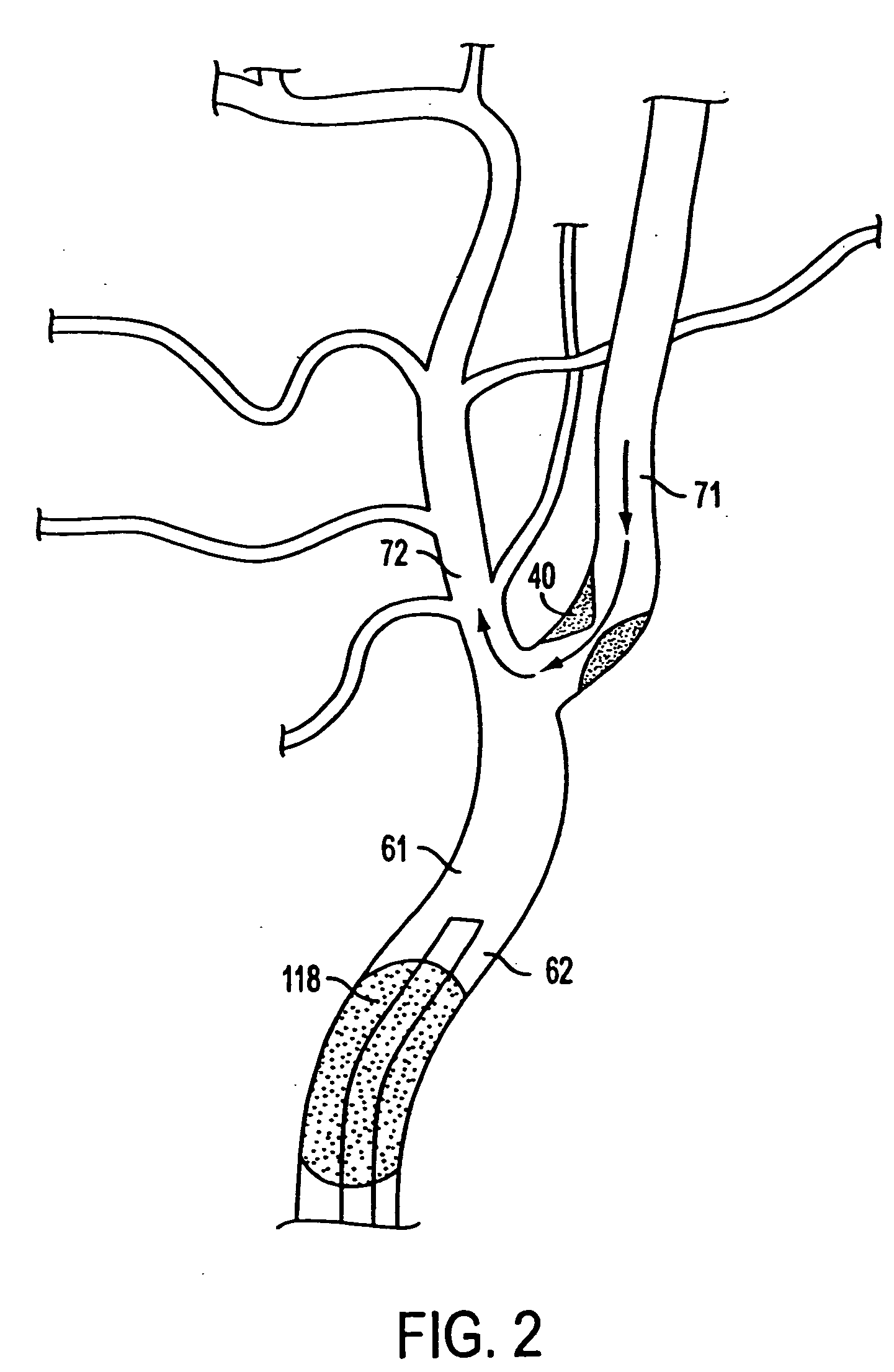ICA angioplasty with cerebral protection
- Summary
- Abstract
- Description
- Claims
- Application Information
AI Technical Summary
Benefits of technology
Problems solved by technology
Method used
Image
Examples
Embodiment Construction
[0039] Referring to FIG. 1, the apparatus of the invention comprises a guide catheter system comprising a hollow guide catheter (111). The guide catheter further comprises a stiff proximal shaft (113), and a soft atraumatic tip (112). These properties allow the catheter to be controllably navigated within an intravascular space, such as the lumen of the common carotid artery (62), while minimizing the risk of injury to the vessel walls. A working lumen of the catheter provides a conduit for multiple apparatus to be independently introduced or withdrawn into the intravascular lumen. The catheter lumen also provides a conduit for fluid communication between the lumen and the exterior of the body. This conduit may allow reagents or other substances to be introduced into or aspired from the lumen interior.
[0040] The apparatus further comprises a guide catheter balloon (118) disposed near the distal end (112) of the guide catheter (111). This balloon may be integral with the catheter, o...
PUM
 Login to View More
Login to View More Abstract
Description
Claims
Application Information
 Login to View More
Login to View More - R&D
- Intellectual Property
- Life Sciences
- Materials
- Tech Scout
- Unparalleled Data Quality
- Higher Quality Content
- 60% Fewer Hallucinations
Browse by: Latest US Patents, China's latest patents, Technical Efficacy Thesaurus, Application Domain, Technology Topic, Popular Technical Reports.
© 2025 PatSnap. All rights reserved.Legal|Privacy policy|Modern Slavery Act Transparency Statement|Sitemap|About US| Contact US: help@patsnap.com



